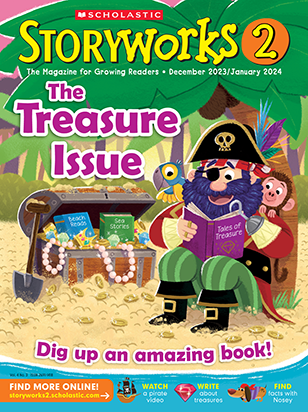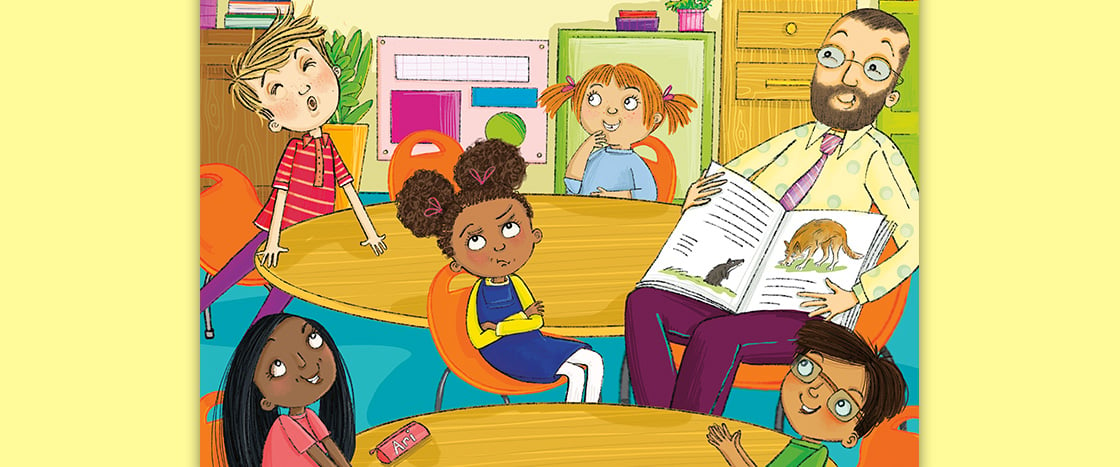I’m really good at science. My best friend Ari is too. We’re going to be scientists when we grow up.
Our teacher, Mr. Chen, says we’re starting a new science project. It’s about animals helping each other. I’m so excited. I grin at Ari.
Mr. Chen shows us pictures of animals helping each other. First is a badger and a coyote. They help each other hunt.
Behind me, I hear a loud howl. It’s Cody.
He’s pretending to be a coyote. Everyone laughs, even Mr. Chen. Cody is in theater club. He’s always putting on a little show. It’s annoying. I roll my eyes.

